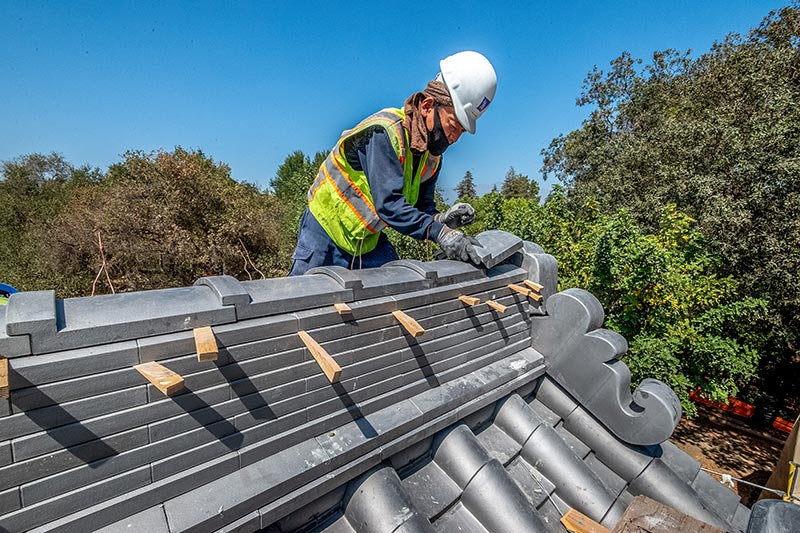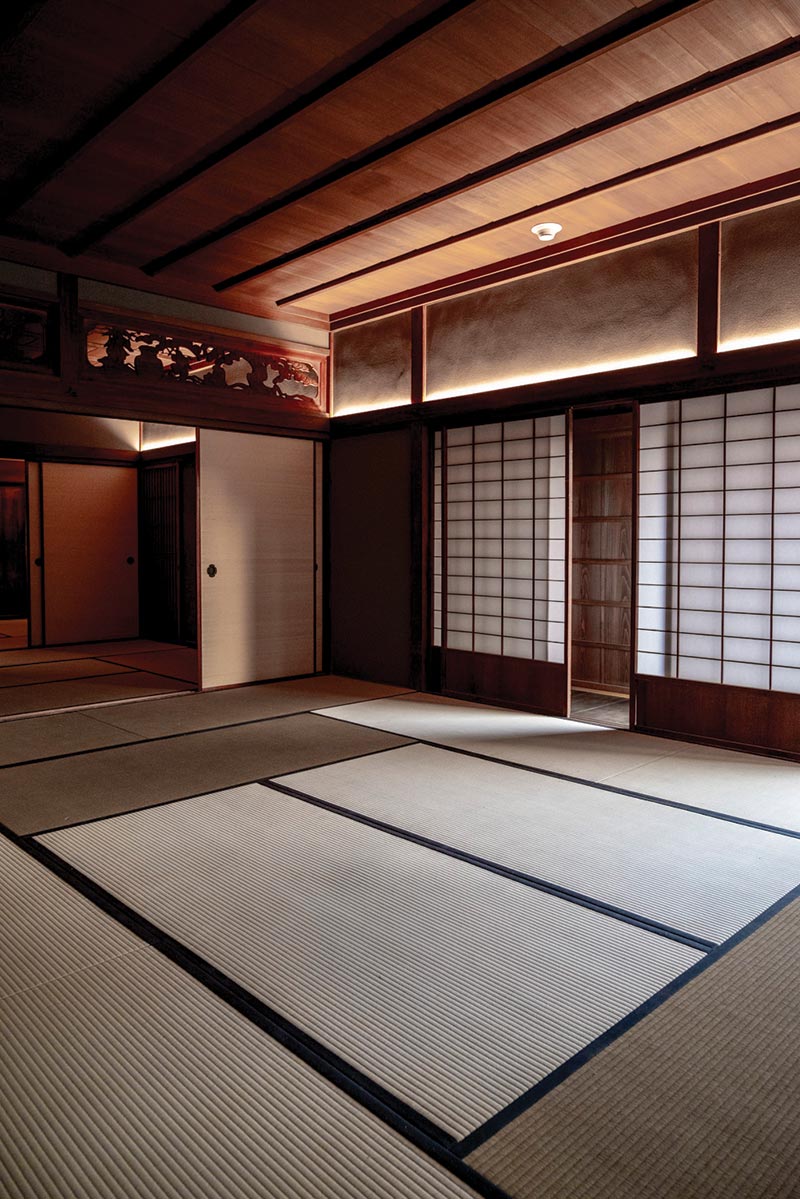
Sustained by Tradition: Japanese Heritage Shōya House Moves to The Huntington

Akira and Yohko Yokoi in front of their 320-year-old ancestral home, which they donated to The Huntington. | Photo by Sarah M. Golonka.
An important addition to the botanical collections, the Yokois’ historic home celebrates the agricultural roots of ornamental landscape design. In addition to the main house, the courtyard garden—featuring more than 820 stones and large rocks collected by Yokoi ancestors over the centuries from neighboring islands around the Seto Inland Sea—is being reconstructed at The Huntington. The walled garden will include a dry streambed, koi pond, stone bridge, stone lanterns, and a hand-washing basin. A second basin is located along the garden’s perimeter. Over $11 million has been donated to support the project.
The Japanese Heritage Shōya House will join the iconic Japanese Garden and the newly expanded Chinese Garden as one of the focal points of the Center for East Asian Garden Studies, which oversees The Huntington’s educational outreach programs to promote a deeper understanding and appreciation of East Asian culture. The Huntington’s celebration of Japanese culture began in 1911, when the Japanese Garden was built and the 19th-century Japanese House was acquired (a restoration of the latter was completed in 2013). The cultural conversation continued with the addition of the bonsai court in 1968 and a ceremonial teahouse in 2010.
The Yokoi family offered their historic home to The Huntington in 2016. Generations of the family lived in the beloved house, including Akira, a 19th-generation descendant. “I was raised in the house and lived there for over 10 years, during grammar school and middle school,” he says. Following the death of his grandmother, the last inhabitant, the house remained unoccupied for three decades.

Koji Ono, an artisan from Japan, sets a roof tile in place atop The Huntington’s reconstructed Shōya House. Relocating the centuries-old house has taken “faith, determination, grit, and a lot of money,” says Don Conlan, a member of The Huntington’s Board of Governors and the former chair of the Botanical Gardens Committee. | Photo by John Diefenbach.
Akira and Yohko, who live in Los Angeles, traveled to Marugame at least twice a year to keep the house maintained. Preserving a part of the Yokoi family heritage was always uppermost in their minds. Originally, the couple intended for the building to become a local museum. But a serendipitous meeting with Robert Hori, cultural curator and program director for The Huntington’s Botanical Gardens, and subsequent introduction to Jim Folsom, now the Telleen/Jorgensen Director Emeritus of the Botanical Gardens, presented a new option: Relocate the historic structure to Southern California.
“The Huntington’s ideas and desire to restore the house presented an intriguing alternative,” Akira says. As plans for the project evolved, so did the Yokois’ confidence that the house would be preserved, cared for, and studied.

A view of the Shōya House’s formal reception room, which features tatami floor mats, sliding panels, and decorative transom carvings. | Photo by John Diefenbach.
The educational potential for architects, scholars, and general visitors is what appealed most to the Yokois. The house will be an important primary resource for those who are interested in wood beam construction and Japanese building techniques. The structure also tells the story of Japanese agricultural traditions that focused on reusing and recycling, practices that resonate with current conversations about sustainability and environmental stewardship. In addition, The Huntington’s Center for East Asian Garden Studies plans to host seminars and lectures related to these subjects. “Education was very important to the family throughout history,” Yohko says. “I think that’s why the family lasted so long and was so prosperous.”
The scope and complexity of the move required extensive preparation, experienced craftsmen, and a solid logistical strategy. Southern California’s warm and dry climate was a consideration because heat can destabilize and dry out wood. Another major challenge was the house’s intricate structure of interlocking joints with no nails. Professional carpenters with three decades of knowledge studied how the major ceiling beams and other wooden features were assembled. The house was disassembled on-site in Japan, transported, and then restored and rebuilt in an airplane hangar in Matsuyama to ensure proper fitting before later being disassembled once again for the move to California.

The inner courtyard garden wraps around the formal reception room. | Photo by John Diefenbach.
“The house holds a lot of good memories,” Akira says. “It was sad to see it disassembled—but grand to see it returning to its original shape once it arrived at The Huntington.”
The house—among the oldest now in California—was rebuilt on three-quarters of an acre between the Japanese and Chinese gardens.
Huntington President Karen R. Lawrence adds: “We are deeply indebted to Yohko and Akira Yokoi, whose donation to The Huntington will preserve an important aspect of Japanese cultural heritage. In giving their historic family home to The Huntington, the Yokois are providing us with the opportunity to let Huntington visitors experience a garden and home as they were traditionally inhabited throughout Japan.”
The Japanese Heritage Shōya House and accompanying garden are scheduled to open in October 2023.
Generous support for this project is provided by Anonymous, Gwen and Guil Babcock, The Kenneth T. and Eileen L. Norris Foundation, June and Simon K.C. Li, Frank and Toshie Mosher, The Ralph M. Parsons Foundation, The Toshizo Watanabe Foundation, and Akira and Yohko Yokoi and family.